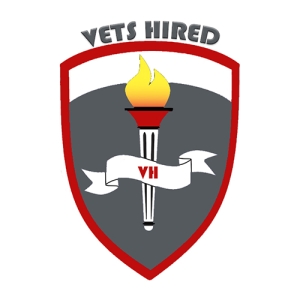HOW DOES A SCHOOL GET A PROGRAM APPROVED FOR GI BILL BENEFITS?
State Approving Agencies (SAA) are generally responsible for the approval of education and training programs in their respective states. They are the pathway into VA for a program’s recognition and identification as being eligible for the payment of VA education benefits. Colleges, universities, and other training establishments seeking to provide VA eligible training programs should begin by contacting their SAA. For a listing of all SAAs, please click here.
Following is a listing of general approval guidelines for programs of education broken down by various types of training programs. As stated above, for more information and approval assistance schools and training institutions seeking approval of their training programs for GI Bill benefits should contact their SAA.
“Educational Institutions” and “Institutions of Higher Learning”
Accredited Institutions
Accredited programs must meet the requirements of 38 USC §3675 and 38 CFR 21.4253. Accredited standard college degree programs offered at a public or not-for-profit educational institutions are “deemed approved,” and do not require an approval/review by an SAA. An application is still necessary for a new school seeking approval even when their programs would be deemed approved. Programs at for-profit institutions, even when accredited, are not “deemed approved.”
Both accredited and non-accredited institutions have similar approval requirements, including:
- submission of an application for approval
- submission of a catalog that includes graduation, attendance, progress, and other policies as well as tuition, fees, and program requirements
- written records of review and appropriate credit for prior training
- additional reasonable criteria as required by the State Approving Agency
Non-Accredited Institutions
Non-accredited programs must meet the requirements of 38 USC §3676 and 38 CFR 21.4254.
Both accredited and non-accredited institutions have similar approval requirements as listed above; however, when an institution is non-accredited, it is the SAA that must review and verify the substantial list of legal requirements contained in 38 USC §3676.
A few examples of issues more thoroughly reviewed and not assumed for non-accredited and for-profit institutions include:
- Financial soundness of the institution and its capability to fulfill its stated training mission
- Institution enrollment limitations
- Training Establishments
- OJT and Apprenticeship Training
OJT programs must meet several criteria found in 38 USC §3677 and 38 C.F.R. 21.4262(c); the high-level requirements include:
- The OJT program provides the job skills and related training the trainee needs to be fully qualified for the job.
- It is reasonably certain that the job for which the person is being trained will be available after the trainee completes the program.
- The job customarily requires between 6 months and two years of full-time OJT.
- The length of the OJT is not longer than customarily required in the community.
- Progression and promotion to the next higher level depend on skills learned through OJT training and not just on such factors as length of service and normal turnover.
A non-DOL-registered apprenticeship program may be approved for Veterans training by the SAA if they meet the requirements and approval criteria found in 38 USC §3687 and 38 C.F.R. 21.4261(c); the high-level requirements include:
- Must meet the standards of apprenticeship published by the Secretary of Labor under 29 USC §50a and 29 C.F.R. 29.4, 29.5 and 29.6
- A signed copy of the training agreement for each Veteran or eligible person, making reference to the approved training program and wage schedule, is provided to the Veteran or eligible person and the Department of Veterans Affairs by the employer
Veterans can take advantage of OJT and Apprenticeship programs by sending an application for benefits to VA; presumably, the veteran has already made contact with an employer that has a program approved to provide apprenticeship training. If the employer is not approved for VA benefits, the employer should contact the SAA for information on gaining approval. - DOL-registered apprenticeship programs are “deemed approved” for Veterans training however, the SAAs act as a conduit for the flow of necessary approval information to VA. Employers who wish to have their apprenticeship program included in the listing of those eligible for VA education benefits must contact their SAA of jurisdiction.
The difference between OJTs and Apprenticeship training is that apprenticeships are generally skilled trades that require at least 2 years of training and must follow specific DOL guidelines; OJTs are generally employer need based and generally do not require 2 years of training.
Prohibitions to Approval
A list of prohibited programs and practices can be found primarily in 38 USC §3680A; they include the following highlights:
- Programs must not be avocational
- Exceptions: None; The SAAs should not approve training of any kind that does not conclude with a standard college degree or certificate of training with a clear vocational objective or purpose.
- Private and not-for-profit educational institutions that do not offer a standard college degree must have been operational for at least two years (2-year rule)
- This is an important safeguard preventing a “fly by night” operation from gaining approval without demonstrating a measure of quality and stability in its continuous operation. “Operation for two-years” is generally considered by SAAs to start from the time the entity was licensed and/or approved by other state regulatory authority, such as a state department of education or state department of business licensure.
- Exceptions: “If the course is offered by an institution under contract with the Department of Defense or the Department of Homeland Security and is given on or immediately adjacent to a military base, Coast Guard station, National Guard facility, or facility of the Selected Reserve”.
- There are no “waivers” to this rule, only the exception stated above.
Program enrollment by VA beneficiaries may not exceed 85% (85-15 rule)
This important safeguard prevents the specific targeting of veterans benefits as well as offers a measure of assurance that the quality and cost of the program is such that at least 15% of those willing to enroll and pay the expected tuition and fees are from the general population.
Exceptions: VA may approve programs that exceed 85% veteran enrollment if the course is offered under contract with DoD or DHS and is given on, or immediately adjacent to, a military facility.
If the program or course is being offered under contract, the contractor must obtain its own VA approval from the SAA
Accredited or non-accredited institutions that offer programs under contract from a third party must have those programs approved; the contractor must obtain its own approval using the same criteria and standards outlined in this paper.
Many agencies and corporations offer rigorous training programs to our Nation’s Veterans and that these programs may be offered in offices, shops, community centers, plants, etc. Many of these training programs offer excellent opportunities for employment or advancement. Under current law, programs that may be considered for approval for educational benefits must be offered by educational institutions.


